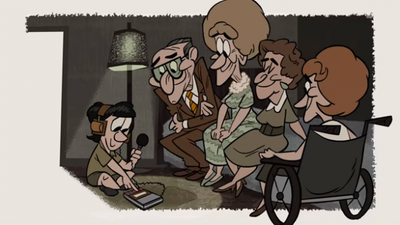Researchers at U.C. Berkeley are using cutting-edge technology to tap into the human brain. It's not mind-reading per say, but they are trying to piece together how parts of the brain react to what it sees in the world.
According to Professor Jack Gallant and his team of researchers, it's a lot like watching a movie.
"You walk around the world and you're moving your head and your eyes around and you're looking at scenes, but, in some sense, you're really just watching a movie of the world going by," he said.
Using an FMRI machine, a scanner designed to measure blood flow in the brain, Gallant's team showed movie trailers to test subjects. By doing so, the scientists were able to see the brain activity elicited by the movie clips. Red meant more activity, while blue meant less activity.
The team then built a dictionary that translates between things that happen in the world and these different parts of your brain and how they respond. They blended together the frames that matched best with their results. This allowed them to make a rough reconstruction of the movies the subjects saw.
The images were far from perfect, but it was a start.
Some companies have adapted a simpler, more stripped-down approach called electroencephalography, or EEG.
Unlike the big expensive equipment need for FMRI, the EEG technology used by the company NeuroSky is smaller, cheaper and ready for mainstream use.
EEG converts the electrical impulses of the brain into patterns that can be seen on a computer. It's less precise than FMRI, but it can provide a glimpse of the overall mood of the brain or what are called dominant mental states.
These advances in neuroscience are setting the stage for new applications that may soon improve our lives. And as these technologies evolve at the juncture between machines and the mind, our idea of mind-reading may not be so far-fetched after all.
Quotes
"We're not doing mind-reading here. We're not really peering into your brain and reconstructing pictures in your head. We're reading your brain activity and using that brain activity to reconstruct what you saw. And those are two very, very different things." - Jack Gallant, U.C. Berkeley.
Warm Up Questions
1. What does the word "neuroscience" mean?
2. What is an MRI machine? What is an FMRI machine?
Discussion Questions
1. What do we know about the human brain?
2. Do you think it's important to study the human brain? Why or why not?
Additional Resources
Researchers Reconstruct Movies Using Scans of Brain Activity


